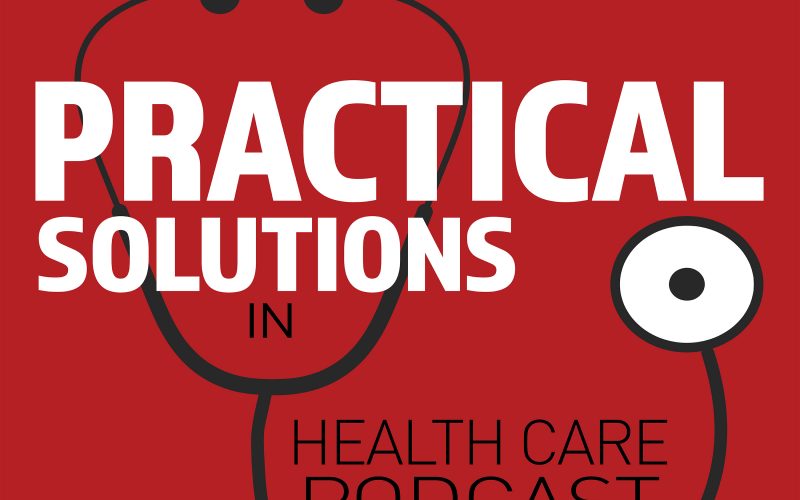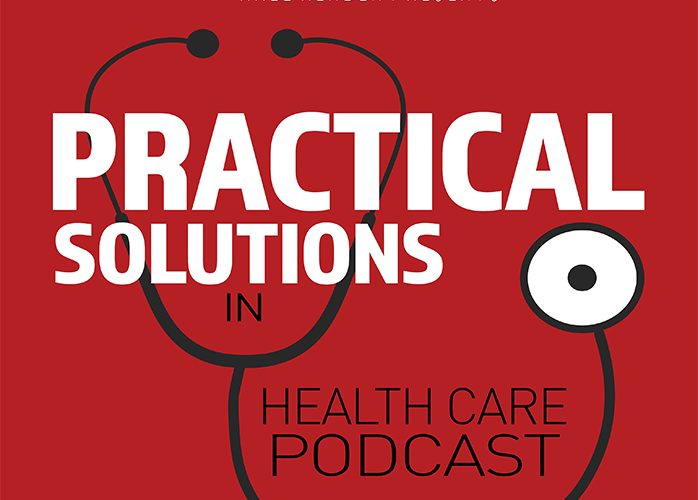Preparing for the End of Stark Law Blanket Waivers: Insights and Strategies for Health Care Providers
Preparing for the End of Stark Law Blanket Waivers: Insights and Strategies for Healthcare Providers
Hall Render attorneys Alyssa James, Erin Drummy and Joe Wolfe discuss the upcoming end of the declared federal public health emergency (PHE) on May 11, 2023, and its impact on Stark Law blanket waivers and physician arrangements. The blanket waivers were initially issued in March 2020 to help hospitals and health systems with physician contracting and compensation models, staffing issues, and scaling up response to the public health emergency. The blanket waivers provided flexibility to health care providers in ensuring compliance with the Stark Law while addressing the needs of patients for COVID-19 related purposes. The waivers were used to stabilize physician compensation, secure necessary space and equipment, and provide additional items or services to referring physicians. The podcast discusses ways hospitals and health care systems, physician groups and other providers used the waivers over the past three years, and it provides recommendations and considerations to ensure Stark compliance post-PHE.
Podcast Participants
Alyssa James
Attorney, Hall Render
ajames@hallrender.com
Erin Drummy
Attorney, Hall Render
edrummy@hallrender.com
Joe Wolfe
Attorney, Hall Render
jwolfe@hallrender.com
Alyssa James: Hello and welcome to Hall Render’s Practical Solutions Podcast in Healthcare regulatory update. I’m your host Alyssa James, and I’m a shareholder with Hall Render, the largest healthcare focused law firm in the country. Today, we’re here to discuss the upcoming end of the declared federal Public Health Emergency (PHE) that ends on May 11th, 2023, and the impact that it will have on the Stark Law Blanket Waivers and physician arrangements that have relied on those Waivers. So let’s dive right in. Joe, can you briefly tell us about what the end of the PHE and related Blanket Waivers means for healthcare organizations and providers?
Joe Wolfe: Thanks, Alyssa. It’s nice to be able to talk through this now that the Public Health Emergency is coming to an end. The Waivers were initially issued back in March of 2020. They were always set to expire at the end of the declared Public Health Emergency, and they were really helpful for hospitals and health systems and other providers back then. If you recall, there were lots of challenging times around physician contracting, physician compensation models and staffing issues back then. There was a lot of scaling up in response to the public health emergency. So the Waivers were issued again back in March of 2020. They were set up so they could be relied upon for financial arrangements that relate to a COVID-19 purpose and our arrangements we were analyzing under the Waivers were physician services arrangements where we were pulling together emergency coverage and maybe you weren’t able to get in line the documentation to support fair market value.
One of the Waivers included payments to physicians above or below fair market value for personally performed services. For example, there were some Waiver concepts around space and equipment rentals and rental charges for equipment or office space above and below FMV at that time, there was some Waiver of the medical staff incidental benefits occurrence cap around non-monetary compensation, some discussion of loans. If you recall, the Waiver document back then gave a number of examples. I think there were around 20 of them of specific arrangements that could fall within the scope of these Waivers. It gave healthcare providers some flexibility to look to the Waivers, rely upon them if they needed to, and then they needed to document their use of those safeguards contemporaneously. As we even thought about it back then, it was always a novel concept. We didn’t know how long they were going to stay in place, but they also had remained untested.
We encouraged our clients that if they’re going to rely on those Waivers to get something in the record, definitely before the public health emergency came to an end. So fast-forward to now, the Waivers, it was recently announced that they’re going to end on May 11th, so coming up very soon. So that’s a little background in the Waivers. I saw clients mostly relying on them for the stabilization of physician compensation plans, saw them use them in some coverage situations where maybe there was a hospital-based coverage arrangement where the financial model didn’t work as anticipated. I also saw it used in the lease context, especially where physicians were leasing space from a healthcare entity and needed to build in some flexibility in that area. So that’s a little bit of background on the Waivers.
Alyssa James: Thanks, Joe. Now that we have that background and lay of the land – Erin, can you share some ways that you’ve seen clients use the Waivers and have worked with clients to utilize the Waivers over the past three years that they’ve been available?
Erin Drummy: Sure. So at the time that the pandemic was beginning and certainly at the height of the pandemic with the lockdowns and the restrictions on elective procedures, I was actually serving as general counsel for a large national physician group. We, like many other healthcare providers, were experiencing revenue challenges associated with the restraints on elective procedures. Even thereafter, patients were not particularly excited about leaving their home and coming to the doctor’s office for routine elective or preventative services. So one of the early uses of the Waivers that I personally was involved with and am aware of other providers utilizing as well, is seeking rental abatements from landlords and hospital/health system landlords where Stark was implicated. I think there were a number of providers that were seeking these types of abatements or rental relief and rental reduction to ensure that they could continue to operate even in light of these revenue challenges.
We also saw a desire by hospitals and health systems to provide telehealth equipment to physicians and physician practices at no charge or at a reduced charge. Again, looking to secure services for patients who are reluctant or unable to leave their home to seek medical services. Many hospital and health system clients reached out to ask for advice related to providing items for additional medical staff incidental benefits and other non-monetary items to their referring physicians. Sometimes these were items or services directly related to PPE, things of that nature. Other times it was comfort. Additional meals or having some additional amenities for providers who were spending many, many hours in the hospitals taking care of patients.
One of the other Waiver uses that we’re aware of pertains to the physician owned hospitals. As you likely know, the Stark Law places restrictions on the total number of beds, operating rooms, and procedure rooms that a physician-owned hospital can have, and it can’t expand beyond that number without an exception granted by CMS. But during the public health emergency, there was a Blanket Waiver that permitted a temporary expansion of beds to meet inpatient hospital needs. Then finally, I would note that in the physician group side, the in-office ancillary services exception, there was a Waiver that permitted some additional flexibility around the location requirements for that exception. We’re aware of clients who were looking to provide items or services via mail or in other locations that may or may not have met the location requirements for same building or centralized building under the in-office exception.
Alyssa James: Thanks, Erin. I know a lot of clients that I worked with, particularly early on in the pandemic, seemed to center around either decreases in services due to surgery cancellations and elective surgery terminations and things like that, but wanting to make physicians whole from a RVU and compensation standpoint as well as instances where, depending on the specialty, you also had physicians doing a lot of extra work and extra hours that depending on their compensation model in their original arrangement, they may or may not have gotten adequate credit for.
So many were wanting to increase compensation for that work and having the Waivers to rely on for situations where maybe that additional compensation could have exceeded fair market value, or even just having the comfort of the Waiver without having to go out and seek a new opinion at times when things were moving so quickly. I know a lot of clients were really appreciative of that flexibility and having those opportunities. So along those lines, Joe, can you tell us a little bit more about what you think providers and healthcare organizations that have utilized any of these Blanket Waivers in the past should be doing now to prepare for the termination of the Public Health Emergency and how they can pivot or evaluate any changes they need to make to their arrangements?
Joe Wolfe: Sure, Alyssa. I think first of all, it’s important to think, and Erin and Alyssa, you already described some situations where you went through the regulatory analysis back then, and if we all go back in time, I don’t think it was a free for all back then. There were situations that healthcare organizations were encountering and they were doing the analysis and they were deciding whether they needed to rely on the Waiver. So I think it’s important to know that this isn’t starting. Right now, getting a sense of what occurred isn’t maybe as heavy a lift as we might think because there already is going to be a record back there in time when you made that decision. A lot of strong analysis was developed back as the pandemic unfolded. As healthcare organizations think about winding down and reassessing again, understanding that what occurred in the past is important to go back and start to think about and review that internal documentation to analyze the timing, what actions were taken, how the disbursements of compensation were handled.
It’s likely you relied on an existing exception or safe harbor. Maybe you didn’t even need to look to the Waivers. Maybe you were able to get comfortable looking to Stark or the Anti-kickback Statute. Maybe that’s already reflected in the record. If you go back, you also may have the luxury now of saying, “Look, it also fit in line with the Waivers as well.” If you did rely on a Waiver, I think it’s important to have in the record how that aligned with the COVID-19 purpose. There were six of them identified in the guidance. Ideally, you’d want your arrangement and what actions you took to fit within one of the defined Waivers or one of the actual examples that the government gave. Of course, many won’t, but I think to the extent your documentation reflects that the actions you took were framed and aligned with those Waiver concepts, the better off you’re going to be.
Then you want to make sure you’ve developed some separate documentation that described the COVID-19 purpose and the scope of the arrangement. There wasn’t one way to do it back then. Like I said, maybe you have something in the record that you can point to. Maybe you developed an amendment and that amendment captures this. Maybe there’s a log. I’ve heard of organizations that developed a COVID log that just identifies in sequence, the actions they took. But outlining what actions you took over time, I think is important. Now that the Public Health Emergency is coming to an end, you still have time to develop that documentation.
You should be thinking about what to do with existing arrangements where you’re still relying on the Waiver. Does it make sense to wind that down? Does it make sense to pivot into some other rationale or regulatory analysis to support staying in that arrangement? You just want to be clear with everyone on the team, your legal team and your compliance team, just where is your defensibility sitting with where you were and if you’re going to stay in that arrangement going forward, what defensibility are you going to rely on? Those are just some thoughts, Alyssa.
Alyssa James: Great. Thanks, Joe. Erin, what have you seen or thought through with respect to … I know there were blanket Waivers that applied specifically to physician owned hospitals and their ability to temporarily expand their number of beds or their footprint in response to the pandemic. What are folks doing in that space to make sure they get back in compliance with the moratorium on expansion, absent the Waivers?
Erin Drummy: Sure. So I think this one, this is an important one because the risk is significant. As I noted, the exception for ownership in a physician hospital requires that the hospital not have expanded its number of beds beyond a certain threshold. So if during the pandemic, the hospital was relying on the Waivers to do so, to convert beds from observation rooms to inpatient beds or otherwise. It will be very important to have those beds switched back and taken off your license if that’s required. It will vary a bit state-to-state in terms of what the process is, but we certainly want to make sure that’s done prior to the end of the PHE so that there’s no violation, which could potentially implicate all of the referrals by your physician owners. So I think this is an important one, and given that it may take some interaction with the state to adjust the license, I think this is one that we would recommend folks get moving on.
There are, in addition to the unwind provisions that Joe mentioned, there are some individual Waiver abilities or flexibilities. CMS has provided a process by which providers can request a Waiver under an ongoing Waiver post PHE. So that may be something for providers to consider if there is something that’s not a easily able to be unwound or if there’s some other justification for something that might satisfy CMSs requirements to permit an ongoing Waiver. That may be something else that parties want to consider. Specific to physician-owned hospitals, there is an exception process that CMS has for those entities. Again, that may be an avenue to consider, but given the timing, I think it’s important to start thinking about, can we convert these beds back to observation status or are there other things that we can do to get ourselves back to pre-pandemic bed counts in order not to violate Stark?
Alyssa James: Absolutely. That approval process from CMS for possible expansion of physician owned hospitals can be lengthy. So certainly not something that’s going to be in place before the end of the PHE, but something that folks could look to pursue on a parallel track while temporarily, at least for the time being, reducing those numbers back down. So Erin and Joe, what can providers do now if they’re not ready to revert certain arrangements back to their pre Waiver status? I know we’ve touched on this a little bit already, but are there any new or creative options available that provide some flexibility for certain types of arrangements and instances where maybe providers have modified or entered into new arrangements with physicians that they don’t want to end just because the PHE is terminating?
Erin Drummy: Well, one potential option there, Alyssa, relates to a new exception. Hall Render worked with Congress to get a new exception to Stark passed for physician wellness programs. It’s a fairly broad exception that’s available to entities with a formal medical staff. They’re able to offer certain mental health or behavioral health improvements or maintenance programs to physicians in a geographic area that are designed to improve, maintain or prevent mental health issues, including suicide prevention, substance abuse disorders, and things of that nature. I think during the course of the pandemic, we’ve heard a lot about burnout by healthcare providers. I think these mental health concerns can be ongoing. Just because the Public Health Eemergency is ending, these concerns are not. So this is one area where CMS has established a process for a provider to establish via policy, a bona fide program to help prevent and avoid and treat these issues that are being encountered by their medical staff.
This has to be substantive. There’s got to be an evidence-based basis for the program. It’s got to be administered by a qualified healthcare professional. The board needs to approve this. So there are some structural and procedural requirements in order to put one of these programs in place, but that may be an area where providers could consider codifying or formalizing some of the things that they’ve been doing during the pandemic with under the protection of the other blanket Waivers with this new exception. The new exception is available for programs that went into effect beginning at the end of December of 2022. So again, it’s a fairly new program.
Joe Wolfe: Yeah. I would add that I think that’s a great example Erin just gave. Also, there’s some other new opportunities under some recent rule changes. Via the Stark overhaul, the government gave us a new exception for limited remuneration arrangements. Arrangements at or below $5,000 would not be a Stark violation if you have a services arrangement, even if the remuneration is not documented as long as that services arrangement met the “big three.” Meaning that it does not exceed fair market value, is commercially reasonable and doesn’t take into account the volume or value of referrals. So this is a really helpful exception if we do have situations like we had during the pandemic where you need to ramp up coverage very quickly for emergency situation, and as long as that doesn’t exceed $5,700 under inflation now, that’s going to be a protected arrangement. So that’s an area where I think healthcare organizations could put in place some type of a policy or an expectation that if they do get in an emergency situation, they could look to this limited remuneration exception to help protect that.
As I mentioned earlier, just an offshoot of that. I mentioned earlier some of the exceptions or the Waivers that were issued got into arrangements being above or below fair market value for professional services. I think the government was trying to say, “Look, you could have an emergency situation here where you have to get coverage in place quickly, and maybe that’s going to push the limits of fair market value.” The government also came out in the most recent rule making and said, “With respect to fair market value, that extenuating circumstances are relevant for determining fair market value.”
I do think that some of that commentary that the government came out with around the rule change would play right into the pandemic. If you have an emergency coverage situation, you do have to pay higher rates to get that coverage in place. I think you’ll have some protection potentially under the fair market value standard as well. So those are just the limited remuneration exception and the greater flexibility around fair market value, which I think are two areas that will be helpful if they have to revert to arrangements to pre Waiver status, Alyssa.
Alyssa James: Oh, I think those are both really good call-outs of some new flexibilities that came about while we were in the midst of the pandemic. So things that didn’t necessarily exist, or options that didn’t exist pre-pandemic that hopefully continue some of that flexibility that providers have had during the PHE. Another framework that I think could be useful for some providers is the establishment or expansion of value-based enterprises/value-based arrangements where they can partner with physicians and other organizations to effectuate some of those value-based purposes. But I think a lot of the COVID related arrangements or expansions of arrangements for COVID purposes are things that could very easily dovetail into that value-based framework on a go forward basis. Those exceptions under Stark and Safe Harbors under AKS give providers a lot of flexibility they may not have with some of the other Stark Law exceptions.
So there’s a lot of resources on the Hall Render website about value-based arrangements so that anyone who’s interested in those can look to set those up with or without a lot of downside financial risk to the physicians. There are some monitoring and things like that that are required that may take a little bit to get in place and to effectuate, but I think all of those options discuss the wellness exception, limited remuneration and value-based exceptions hopefully will give providers continued flexibility even after the Waivers are no longer available. Joe, Erin, any final thoughts for our audience today with respect to the end of the PHE and its impact on these blanket Waivers?
Joe Wolfe: I just think doing the analysis sooner rather than later is going to be important. So conduct an audit, it’s likely your compliance team may be made up of people that weren’t even part of the team at the beginning of the pandemic. So do that audit. Contemporaneous documentation is the best situation to be in. But I think even having documentation now before the public health emergency is over is critical because you’re not going to want to be developing a record down the road when you have some type of an enforcement type action. So doing it now, it’s the right time to unpack this while you still have the opportunity. But we wish all … We know that everyone had the best of intentions during the public health emergency and they had to move quickly and now as an opportunity in the next few weeks to get these audits in place and to get the documentation solidified.
Erin Drummy: I would echo Joe’s comment around the timing. These things always take longer than you might think they would in terms of getting an updated fair market value in place and getting documentation signed if there’s an arrangement that’s not documented in compliance with a Stark Law that needs to be post pandemic. So I think thinking about identifying those arrangements and getting all of the I’s dotted and T’s crossed in terms of the supporting documentation amendments agreements in place so that you’re well suited to have an arrangement that fully complies with the law as of May 11th.
Alyssa James: I think those are all really good takeaways for the audience. Thank you all for joining us today. If you’d like to learn more about the Stark Law Blanket Waiver termination or other fraud and abuse and compliance issues more generally, please visit our website at hallrender.com or feel free to reach out to Erin Drummy, Joe Wolfe, or myself, Alyssa James or your regular Hall Render attorney. Please remember that the views expressed in this podcast are those of the participants only and do not constitute legal advice. Thanks.







